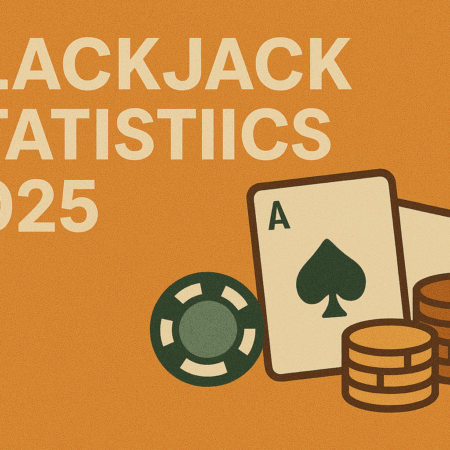Bitcoin mining has come a long way since the early days of hobbyist miners using laptops in their garages. In 2025, mining has evolved into a global industry at the intersection of finance, energy, and cryptographic security. Yet at its core, Bitcoin mining remains the backbone of the Bitcoin network—ensuring its decentralization, validating transactions, and minting new coins.
This guide will explain how Bitcoin mining works in 2025, the technologies involved, environmental concerns, and the growing shift toward greener, more sustainable practices.
What Is Bitcoin Mining?
Bitcoin mining is the process by which new bitcoins are created and transactions are added to the blockchain—a public, immutable ledger. It involves solving complex cryptographic puzzles using powerful computers to validate transactions in blocks. Miners compete to solve these puzzles, and the first to do so adds a block to the blockchain and earns a reward in newly minted Bitcoin plus transaction fees.
This mechanism is known as Proof-of-Work (PoW) and serves two essential functions:
- Securing the network from fraudulent transactions.
- Distributing new Bitcoin in a predictable, deflationary manner.
How Bitcoin Mining Works (2025 Edition)
1. Transaction Verification
When users send Bitcoin, those transactions enter a pool of unconfirmed data. Miners select transactions from this pool and assemble them into candidate blocks.
2. Solving the Hash Puzzle
Miners must find a hash (a cryptographic fingerprint) that meets a specific difficulty target. This involves trying trillions of different inputs until one results in a hash below the required threshold—a brute-force operation that requires massive computing power.
3. Block Confirmation and Reward
The first miner to solve the puzzle broadcasts the block to the network. Other nodes verify it, and once confirmed, the block is added to the chain. The successful miner receives a block reward, currently 3.125 BTC after the April 2024 halving, plus the transaction fees from the block.
Evolution of Mining Hardware: Then vs. Now
Bitcoin mining in 2010 could be done on CPUs. By 2013, GPUs took over, offering better hash rates. ASICs (Application-Specific Integrated Circuits) emerged in 2015 as the dominant force, built solely to mine Bitcoin efficiently.
In 2025, mining hardware is:
- More powerful: Machines like the Antminer S21 can exceed 200 TH/s (terahashes per second).
- More efficient: Energy efficiency is now under 20 J/TH (joules per terahash).
- More costly: Large-scale mining requires significant capital investment, leading to industrial-scale operations in countries with cheap, renewable energy.
Environmental Impact and the Push for Green Mining
The Energy Debate
Bitcoin’s Proof-of-Work system has drawn criticism for its energy consumption. Estimates in 2023 showed Bitcoin used more energy annually than countries like Argentina. However, this narrative has shifted.
Greener in 2025
According to the Bitcoin Mining Council, over 60% of mining is now powered by renewable sources like hydro, wind, and solar. Miners are actively:
- Relocating to regions with renewable surplus (e.g., hydro-rich provinces in Canada, Scandinavia, or Paraguay).
- Utilizing flare gas from oil operations to repurpose waste energy.
- Partnering with nuclear and geothermal providers for long-term stability.
This trend reflects a broader movement toward “green hash” initiatives, where miners are rewarded or given incentives for using clean energy.
Is Bitcoin Mining Still Profitable in 2025?
Profitability depends on several factors:
| Factor | Impact |
| Bitcoin Price | Higher BTC = more revenue per block |
| Electricity Cost | The biggest variable cost |
| Hardware Efficiency | Better machines = more hashes per watt |
| Block Reward | Halved every four years (next: 2028) |
| Network Difficulty | Higher difficulty = more competition |
In 2025, the break-even cost of mining 1 BTC ranges between $28,000–$40,000 depending on electricity and hardware. Many small miners now join mining pools to stabilize earnings and compete with industrial operations.
Bitcoin Mining vs. Proof-of-Stake: Is PoW Still the Future?
Ethereum’s switch to Proof-of-Stake (PoS) in 2022 reignited debates about PoW’s viability. Critics argue PoW is wasteful, while proponents say it offers unmatched security and decentralization.
In 2025:
- Bitcoin remains the largest and most secure PoW network.
- Innovations in renewable integration have made its energy use more acceptable.
- Emerging Layer 2 protocols (e.g., Lightning Network) increase transaction efficiency without replacing PoW.
Bitcoin Mining Hotspots in 2025
Top countries for mining in 2025 include:
- United States: Particularly Texas, due to its deregulated grid and wind energy.
- Kazakhstan: Cheap coal and government support.
- Canada: Abundant hydro and cold climates for cooling.
- Norway & Iceland: Renewable energy and political stability.
Some jurisdictions have also introduced carbon credits or tax incentives for green miners, making eco-friendly operations more appealing.
The Future of Bitcoin Mining
Expect the following trends in the next few years:
- AI-powered optimization: Machine learning will fine-tune mining operations for power efficiency.
- Home mining revival: Plug-and-play miners and access to residential solar may revive small-scale setups.
- Integration with energy grids: Mining will act as an energy buyer of last resort, stabilizing renewable-heavy grids.
- More public mining companies: Transparency and shareholder reporting will drive ESG compliance.
Key Takeaways
- Bitcoin mining is still based on Proof-of-Work, using computational effort to secure the network.
- Hardware has become more efficient, but costs and competition have increased.
- The environmental impact of mining has improved dramatically with over 60% using renewable energy.
- Profitability hinges on electricity prices, BTC price, and mining difficulty.
- PoW remains a cornerstone of Bitcoin’s design, even as other networks adopt PoS.
Frequently Asked Questions (FAQ)
What is Proof-of-Work in Bitcoin mining?
Proof-of-Work (PoW) is a consensus algorithm where miners solve cryptographic puzzles to validate transactions and add blocks to the blockchain. It ensures security and trust without a central authority.
How much Bitcoin is left to mine in 2025?
As of mid-2025, over 19.7 million BTC have been mined, leaving roughly 1.3 million BTC to be issued before the cap of 21 million is reached around 2140.
Is Bitcoin mining legal?
Yes, in most countries. However, some regions (like China) have banned it, while others (like the U.S., Canada, and El Salvador) regulate and encourage it.
Can I mine Bitcoin at home in 2025?
Technically, yes, but it’s difficult to do profitably due to high energy and equipment costs. Joining a mining pool or using hosted mining services may be more feasible.
How does Bitcoin mining affect the environment?
Mining uses a lot of electricity, but in 2025, over 60% of it is powered by renewables. Efforts are ongoing to further reduce the carbon footprint of mining.

 Canada
Canada Deutsch
Deutsch Español
Español Português
Português



